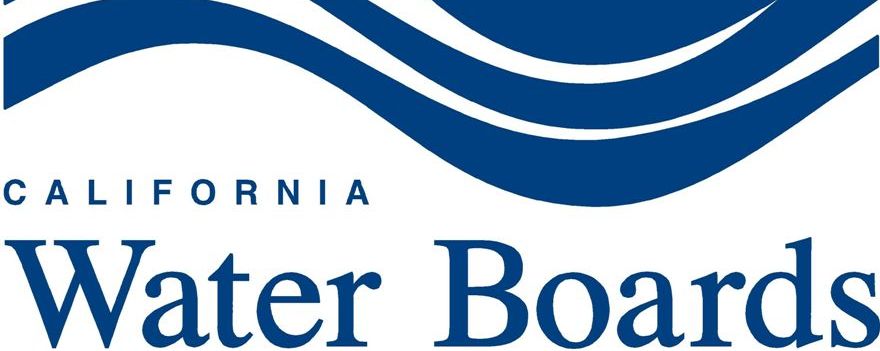From the State Water Resources Control Board:
“The State Water Resources Control Board (State Water Board) last night approved an Order that largely upholds protections for municipal water supplies and fisheries put in place earlier this year. The Order adds new provisions to ensure that the federal Central Valley Project plans maintain minimum reservoir storage levels in two key north state reservoirs as a precaution if dry conditions continue into 2016. Finally, the Order builds on experiences gained in 2014 and 2015 to improve drought planning, information and decision making in the management of both the federal Central Valley Project and the State Water Project (Projects).
In this case, the minimum storage level is the amount of water remaining in the reservoirs at the end of October 2016, and is the amount of water needed for emergency storage to better manage supplies for fish and wildlife, maintain salinity control in the Sacramento-San Joaquin Delta, and for basic human needs. The Order calls for a target storage level of 1.6 million acre-feet in Shasta Reservoir or another target that will ensure that temperature requirements will be met to protect the 2016 winter-run Chinook salmon; and 200,000 acre-feet in Folsom Reservoir. By comparison, Shasta Reservoir was at 1.4 million acre-feet at the end of October this year, and Folsom was at 148,200 acre-feet.
The Order responds to requests that the State Water Board reconsider the Executive Director’s February 2015 approvals of Temporary Urgency Change Petition (TUCP) requests from the Department of Water Resources, which operates the State Water Project, and the U.S. Bureau of Reclamation, which operates the Central Valley Project.
The February TUCP approval relaxed Delta flow and water quality requirements that are the responsibility of the Projects in response to drought conditions.
February 2015 TUCP Requests and Orders
The Executive Director’s approval of the February 2015 TUCP requests allowed the Projects to reduce the quantity of water provided for Delta outflow and inflows by over 800,000 acre-feet. The approval also allowed the Projects to export 1,500 cubic-feet per second when water quality and flow requirements were not being met, and higher exports when other requirements were met. This enabled the Projects to continue Delta exports and maintain water in upstream reservoirs for multiple uses throughout the year. These other uses include water deliveries to senior water right holders upstream of the Delta, temperature control to protect winter-run Chinook salmon, Delta salinity control, and south of Delta water deliveries and water transfers.
Water for temperature control is also available for water supply and salinity control purposes downstream after it is released.
A primary purpose of the February TUCP Order was to preserve additional cold water storage in Shasta Reservoir to protect endangered winter-run Chinook salmon from temperature impacts during their fall spawning period. Protection of winter-run Chinook salmon with a 3-year lifecycle is of particular concern because the species experienced almost total mortality in 2014. High mortality in 2015 would likely cause significant harm to this species, raising concerns of extinction.
State Water Board Order Responds to 2015 Results
The Executive Director acknowledged that the changes approved in the February 2015 TUCP Orders would likely result in less favorable conditions for Delta fish species. At the time, the tradeoff appeared to be reasonable based on available information. Despite the efforts to protect winter-run Chinook salmon in 2015, the species appears to have experienced even higher mortality rates than in 2014, likely a result of inadequate temperature management and other operational issues.
At the same time, numerous other threatened, endangered and commercially important species, including longfin smelt, Delta smelt, fall-run Chinook salmon, spring-run Chinook salmon and steelhead, also experienced significant population declines. To illustrate, no longfin smelt have been caught in surveys this fall and nearly no Delta smelt have been caught, leading to real concern that these species may be at the brink of extinction.
With Project storage levels at critically and historically low levels (Shasta, Trinity, Oroville, Folsom and New Melones Reservoirs were at 29, 19, 26, 14, and 11 percent of capacity, respectively, at the beginning of December), Folsom Reservoir is of particular concern in 2015 and going into 2016. Storage levels in Folsom have dropped to all-time low levels, which threatens the infrastructure that delivers municipal water supplies to hundreds of thousands of people and other industrial users of water.
Storage levels in New Melones Reservoir are also at very low levels, less than 270,000 acre-feet, much less than half the amount of water contracted for from the reservoir. This could result in the Stanislaus River running dry some time in 2016, as well as the San Joaquin River, which depends largely on inflows from the Stanislaus River.
Delta salinity control also is tenuous, which has been the case throughout most of 2015. Violations of water quality and flow objectives have occurred despite reduced flow requirements. Salinity control in the Delta is critical to maintain water quality for farming in the Delta and for municipal water use.
If very significant storm events do not occur this winter and spring, conditions for water supplies and fish and wildlife will be very poor and potentially disastrous.
Yesterday’s Order is intended to ensure that actions are taken to ensure that catastrophic fisheries declines do not continue, that salinity control is maintained in the Delta, and that adequate minimal supplies for health and safety purposes are preserved.
More information on the revised order is here.”
——————————————–
Sign up for daily email service and you’ll always be one of the first to know!
- Sign up for daily emails and get all the Notebook’s aggregated and original water news content delivered to your email box by 9AM. Breaking news alerts like this one, too. Sign me up!
 Maven’s Notebook
Maven’s Notebook
constantly watching over the world of California water


